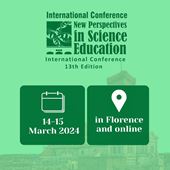Understanding Opportunity Structures in Eight Inclusive STEM High Schools: Critical Components in Theory of Action
Sharon J. Lynch, The George Washington University (United States)
Abstract
In many countries, two vexing problems affect both national economies and the common good. Nations need more young people with strong preparation in STEM subjects and the habits of mind (creativity, collaboration, communication and critical thinking) vital for a 21st century workforce. At the same time, equity concerns require attention to closing the opportunity to learn gaps that lead to inequities in income and social mobility.
This paper argues that a promising solution to both of these problems is a new type of high school emerging across the U.S.-- Inclusive STEM High Schools (ISHSs). ISHSs create new opportunity structures (Roberts, 1968; 1984) for students underrepresented in STEM fields because they connect K-12 schooling with higher education and STEM jobs and careers. The goal of ISHSs is to develop new sources of STEM talent among students who are often shut out of the STEM pipeline (Lynch, 2015; Means, Confrey, House, & Bhanot, 2008; ). ISHSs admit students primarily on the basis of interest in STEM and have student populations that represent a broad range of abilities and ethnic and income groups, making them “inclusive”. Students choose to enter innovative ISHSs that combine real-world, community-based experiences with strong academic preparation for STEM college majors.
The purpose of this paper is to present a theory of action to account for the success of eight “exemplar” inclusive STEM high schools located in seven U.S. states. The schools in this research study were selected for their track records of success, especially for students underrepresented in STEM. Using an initial framework that included critical components, we conducted instrumental case studies for each school, followed by cross case analysis, resulting in evidence for 14 school-level critical components. Some are specific to STEM education and ISHSs.
This paper will discuss how the critical components work together, including emergent components. The developing theory of action draws from meta-theory on social capital, career development, socio-affective theories, and learning theory to explain how inclusive STEM high schools create opportunity structures for students underrepresented in STEM.
We will present a brief video to illustrate one ISHS in action.
 New Perspectives in Science Education
New Perspectives in Science Education


























